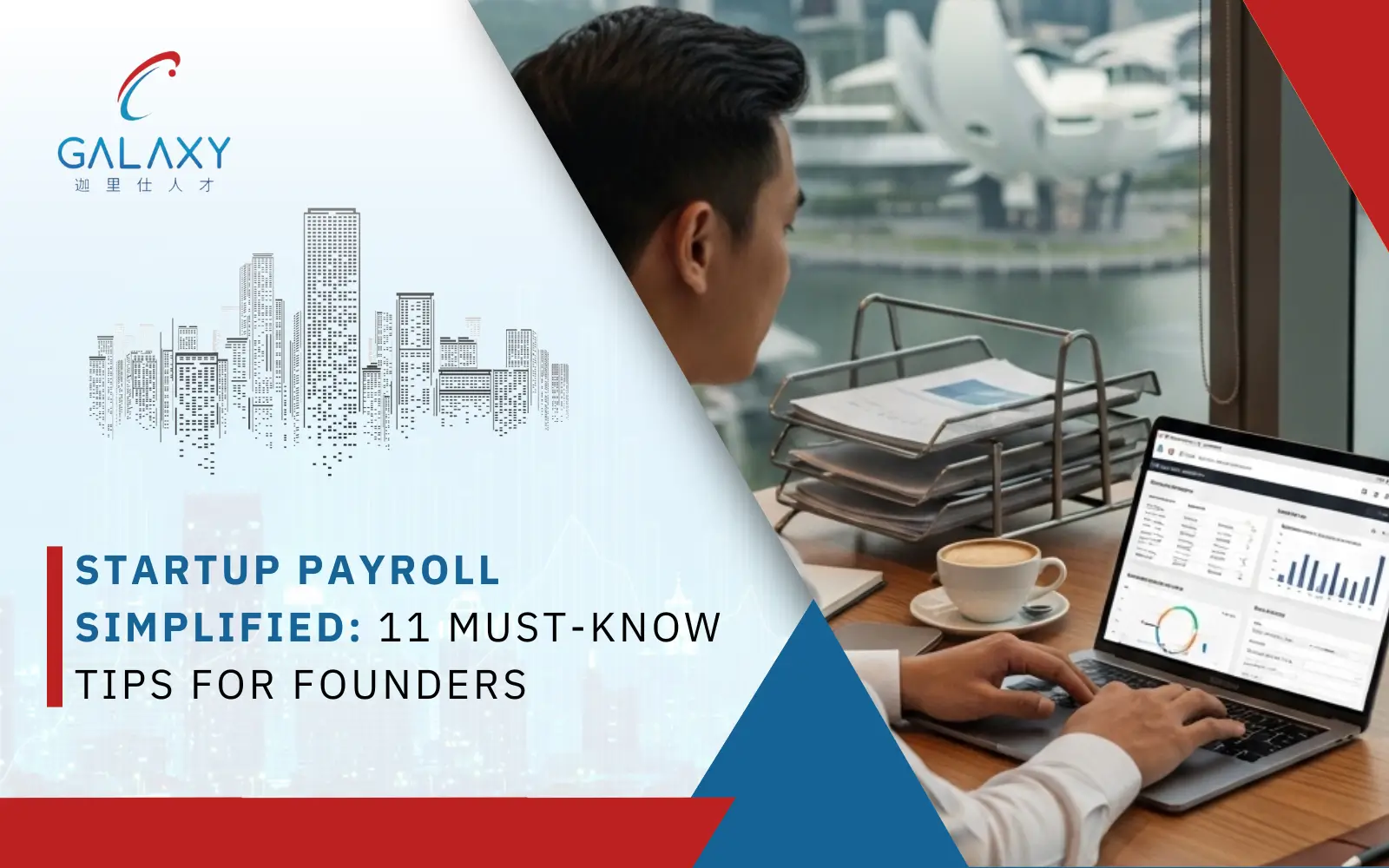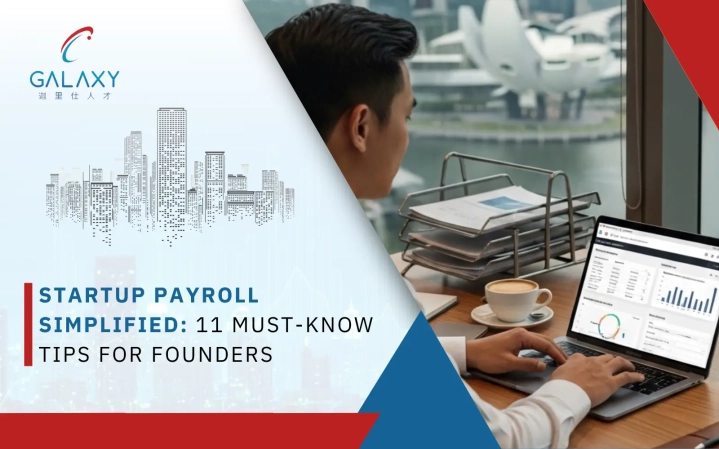AI Meets Payroll : The Future of Effortless Salary Management

Effective payroll management is no longer just a back-office necessity; it has become a decisive factor in how multinational companies operate and grow. From ensuring employees are paid accurately and on time to navigating diverse labour laws and tax regulations, payroll now underpins compliance, workforce morale, and operational stability.
With regulatory frameworks tightening and minimum wage policies evolving across multiple jurisdictions, traditional payroll models are proving inadequate. As a result, more than 70% of multinational organisations are investing in global payroll solutions that provide integration, transparency, and centralised control. These modern systems not only safeguard compliance but also promote business continuity and strengthen employee trust across international markets.
This article explores how payroll functions are evolving through technology and innovative service delivery, the role of Employer of Record (EOR) solutions in this transition, the new expectations businesses place on payroll providers, and the trends set to shape payroll management in 2026.
Table Of Content
- How AI Is Reshaping Payroll Management
- Why AI + EOR = Scalable Global Payroll Solutions
- Key Benefits of AI-Driven Global Payroll
- What Global Payroll Providers Must Deliver in 2026
- Evolving Global Payroll Infrastructure for Distributed Teams
- The Future of Payroll Management in 2026
- Conclusion
- Frequently Asked Questions
How AI Is Reshaping Payroll Management?
Payroll operations are experiencing a significant shift as organisations adopt more dependable and streamlined systems to manage increasingly complex international workforces. Legacy payroll methods—characterised by manual entry, isolated systems, and frequent delays—are being replaced by infrastructure built to enhance accuracy, efficiency, and regulatory compliance.
The key areas of advancement include:
Automation of Core Functions:
Processes such as salary calculations, statutory deductions, and benefits administration are now structured and automated, helping reduce manual input and operational errors.
Real-Time Data Integration
Modern, cloud-based platforms allow payroll teams to synchronise data with HR and finance functions, improving coordination and ensuring information is consistently up to date.
Advanced Reporting and Forecasting
Payroll systems now offer more robust reporting features, enabling businesses to track payroll metrics, project labour costs, and identify compliance risks across multiple regions.
A significant catalyst behind this evolution is the necessity to offer consistency and accuracy in payroll processing across multiple jurisdictions. Centralised systems that are compliant with local regulations give the company an end-to-end process, consequently mitigating the compliance risk and the administrative inconvenience. The ultimate result is an agile payroll system—a better-equipped one that is well-suited to accommodate global expansion and workforce flexibility.
| Feature | Traditional Payroll | Technology-Enabled Payroll |
|---|---|---|
| Processing Time | Several Days | Real-Time or Same Day |
| Error Rate | Moderate to High | Minimal with Automation |
| Compliance Risk | Elevated | Significantly Lower |
| Reporting | Periodic and Manual | On-Demand, Automated |
| Integration with Other Systems | Limited | Seamless and Real-Time |
Why AI + EOR = Scalable Global Payroll Solutions
What Makes This Approach Effective:
-
Faster Hiring in New Markets
-
Local Compliance, Built In
Consistent and Accurate Payroll at Scale
-
Less Administrative Burden
Key Benefits of Technology-Driven Global Payroll
Managing payroll across international markets brings with it a level of complexity that traditional systems are no longer equipped to handle. As organisations grow their footprint, a modern, technology-supported payroll structure becomes essential—not just for compliance, but for efficiency, employee satisfaction, and business continuity.
1. Strengthened Compliance Oversight
Global payroll requires constant adherence to changing labour laws, tax regulations, and statutory deadlines. By directly incorporating current local regulations into payroll processing, advanced payroll systems help ensure businesses fulfil these responsibilities by lowering the possibility of mistakes, delays, or fines.
2. Greater Operational Efficiency
Modern platforms streamline processes that once relied heavily on manual input—such as salary calculations, approvals, and reporting. This results in faster payroll runs, fewer administrative bottlenecks, and a more coordinated approach between HR, finance, and compliance functions.
3. Enhanced Employee Confidence
Reliable and timely salary payments are critical to employee morale, particularly when teams are distributed across different countries. By reducing payroll errors and delays, businesses can strengthen trust with their workforce and support retention efforts.
4. Improved Data Security and Governance
Payroll data is among the most sensitive information held by a company. Secure platforms with built-in encryption, audit trails, and controlled access help safeguard employee records and ensure compliance with data protection regulations.
5. Built-In Scalability for Growth
When entering new markets or expanding teams, businesses need payroll systems that can adapt without disruption. Scalable platforms enable efficient onboarding and payroll management across multiple locations, supporting growth without compromising accuracy or control.
What Global Payroll Providers Must Deliver in 2026?
As companies continue to expand across borders and build distributed teams, the expectations placed on payroll providers have become more demanding and sophisticated. By 2026, payroll will be seen not just as a support function but as a strategic enabler of growth, compliance, and operational consistency.
To meet the needs of modern businesses, payroll providers will need to move beyond basic processing. They must offer solutions that are adaptable, compliant, and capable of supporting organisations across various markets and stages of expansion.
1. A Unified Platform with Full Visibility
Multinational businesses need the ability to manage payroll across countries through a single, centralised system. A unified platform provides HR and finance teams with the clarity and control they need, offering real-time visibility into payroll activity, simplifying reporting, and ensuring consistency across regions.
2. Integrated EOR Capabilities
As more companies look to hire in new markets without establishing legal entities, Employer of Record (EOR) services are becoming essential. Providers that integrate EOR capabilities—such as managing employment contracts, statutory contributions, and local tax obligations—can offer a seamless experience from onboarding through to monthly payroll. This reduces complexity whilst ensuring compliance in each jurisdiction.
3. Scalable Infrastructure That Supports Growth
Whether a company is hiring two people in a new market or managing operations in ten countries, the payroll solution must be able to scale accordingly. Providers need infrastructure that accommodates both small and large workforces, without compromising accuracy or service quality.
4. Support for Cross-Border Payments and Local Tax Handling
Timely, compliant salary payments are critical to maintaining employee trust and operational stability. Payroll partners should be equipped to handle multi-currency payments, local tax deductions, and social security reporting—coordinating closely with banks and government agencies to ensure accuracy and timeliness.
5. Responsiveness to Changing Regulations
Employment laws, tax codes, and wage structures are constantly changing. A capable payroll provider must be prepared to adapt quickly—applying local changes in real time and advising clients on new obligations as they emerge. This level of responsiveness is essential to avoiding compliance risks and maintaining business continuity.
In the years ahead, payroll providers will be judged not just by their ability to run calculations but by the strength of their systems, the depth of their local knowledge, and the value they bring to global business operations.
Evolving Global Payroll Infrastructure for Distributed Teams
Core Features of a Modern Global Payroll Framework:
1. Cloud-Based Accessibility
Cloud-based platforms give teams in different time zones and departments—such as HR, finance, and compliance—access to the same up-to-date information. This improves coordination, supports faster decision-making, and ensures consistency across the organisation.2. Built-In Local Compliance
Modern payroll systems must automatically apply the correct tax rates, benefits, and legal requirements for each country or region. This includes:- Calculating the right deductions
- Meeting minimum wage obligations
- Managing employer contributions
- Preparing reports for local authorities
3. Seamless Integration with Business Systems
Payroll must connect smoothly with HR, accounting, and time-tracking platforms. Systems that support integration reduce data duplication, improve reporting, and help maintain a single source of truth across departments.4. Self-Service Access for Employees
Employees expect to manage their own payroll-related information. Secure self-service portals make it easy for them to:- Download payslips and tax documents
- Review their benefits and deductions.
- Update personal or banking details
The Future of Payroll Management in 2026
As workforce strategies become more global and employee expectations more diverse, payroll is evolving into a central element of business planning and risk management. By 2026, payroll systems will extend well beyond processing payments, playing a vital role in decision-making, compliance, workforce engagement, and cost optimisation.
1. Tailored Compensation Structures
Organisations are moving away from standardised salary models. Pay packages will be shaped by local market standards, job roles, and individual preferences—incorporating regional benefits, equity options, and performance-based incentives. This approach strengthens retention and reflects the needs of a multi-generational, global workforce.
2. Real-Time Payroll Analytics
Payroll data will increasingly serve as a strategic resource. Finance, HR, and leadership teams will use real-time dashboards to track salary trends, forecast costs, and align hiring plans with budgets. These insights will also allow companies to model different workforce scenarios and respond quickly to organisational changes.
3. Compliance-as-a-Service (CaaS)
With labour and tax regulations changing frequently across jurisdictions, payroll providers are embedding compliance management into their platforms. Automated updates will ensure new rules and wage structures are applied seamlessly, reducing risk and protecting against penalties.
4. Proactive Minimum Wage Tracking
Future payroll systems will monitor proposed legislative changes to minimum wages across markets. This will give organisations time to plan and adjust compensation before enforcement deadlines, particularly in regions with fast-moving regulatory environments.
5. AI-Driven Payroll Automation
Artificial intelligence will enhance payroll accuracy by detecting anomalies, flagging duplicate entries, and predicting overtime or leave-related costs. By reducing manual intervention, AI will streamline payroll cycles and support more reliable workforce planning.
6. Employee Self-Service and On-Demand Pay
Modern payroll solutions will increasingly empower employees. Mobile apps will enable staff to access payslips, update personal details, and in some cases, draw down earned wages before payday. This flexibility improves transparency, supports financial well-being, and strengthens trust.
7. Seamless HR and Finance Integration
Payroll will no longer function in isolation. Integration with HR, compliance, and finance platforms will create a unified view of workforce and cost data, helping companies align compensation strategies with broader business objectives.
8. Blockchain and Secure Cross-Border Payments
Blockchain technology has the potential to transform payroll by ensuring secure, transparent, and tamper-proof transactions. For multinational companies, it could also simplify cross-border salary transfers, reducing costs and delays associated with traditional banking systems.
9. Payroll in ESG and Sustainability Reporting
As ESG reporting becomes a board-level priority, payroll systems will support pay equity, transparency, and fair compensation tracking. Linking payroll data to diversity and inclusion metrics will demonstrate accountability to employees, regulators, and investors.
10. Personalised Compensation Through Data Insights
Data-driven payroll platforms will support more individualised benefits, from tailored learning allowances to incentive schemes linked to performance and career goals. This personalisation will strengthen employee engagement and align workforce rewards with organisational priorities.
conclusion
Payroll can no longer be treated as a manual or isolated function. As organisations expand across borders and face increasingly complex employment environments, the ability to manage regulatory changes, multi-currency transactions, and diverse workforce arrangements must be built into every global strategy.
Forward-thinking organisations are already adapting payroll operations to these demands. By investing in scalable, compliant, and data-driven payroll infrastructure today, businesses will be better positioned to manage growth, maintain workforce confidence, and compete effectively in 2026 and beyond.
By combining advanced payroll infrastructure with Employer of Record (EOR) services and real-time reporting, companies can simplify administration, ensure compliance, and strengthen employee trust across all regions of operation.
For organisations entering Asia-Pacific and other international markets, choosing the right partner is essential. Galaxy Payroll Group delivers regional expertise, robust compliance frameworks, and scalable payroll solutions tailored to the needs of multinational teams—empowering businesses to expand globally with confidence.
Need Trusted Payroll Support Across APAC?
Employer of Record (EOR) solutions led by experts and global payroll solutions designed for multinational teams will guarantee compliant, scalable, and seamless payroll operations.
FAQ’S
Why is international payroll often challenging to manage?
Managing payroll across different countries involves understanding varied tax codes, wage laws, social contributions, and employment regulations. Each country has its own reporting formats, timelines, and statutory requirements. Coordinating payments in multiple currencies and maintaining compliance in every jurisdiction requires strong local knowledge and centralised oversight.
What is the difference between an Employer of Record (EOR) and a traditional payroll provider?
A payroll provider manages salaries, taxes, and benefits for a registered company. An EOR goes further—it becomes the legal employer, handling payroll plus contracts, compliance, and onboarding. This lets you hire abroad without setting up a local entity.
Can payroll automation help businesses stay compliant?
Yes. Automation can help reduce compliance risks by applying the correct local tax rules, wage thresholds, and benefit contributions automatically and accurately. This is particularly useful in countries where employment regulations change frequently or vary across regions.
What are the benefits of using a unified global payroll platform?
A single, integrated platform enables companies to manage payroll across multiple countries from a single, central system. This reduces duplication, improves data accuracy, simplifies reporting, and gives leadership greater visibility into payroll operations worldwide.
Will AI technology replace payroll professionals?
Check their global coverage, compliance strength, HR/payroll integration, transparent pricing, and local employee support.
How long does it take to implement a global payroll solution?
Implementation timelines depend on the complexity of the business. A company expanding into one or two countries may be operational within weeks. Larger organisations with multiple entities may require several months for integration, testing, and compliance alignment.




